Nostalgia for the Future
California Indigenous Heritage Center
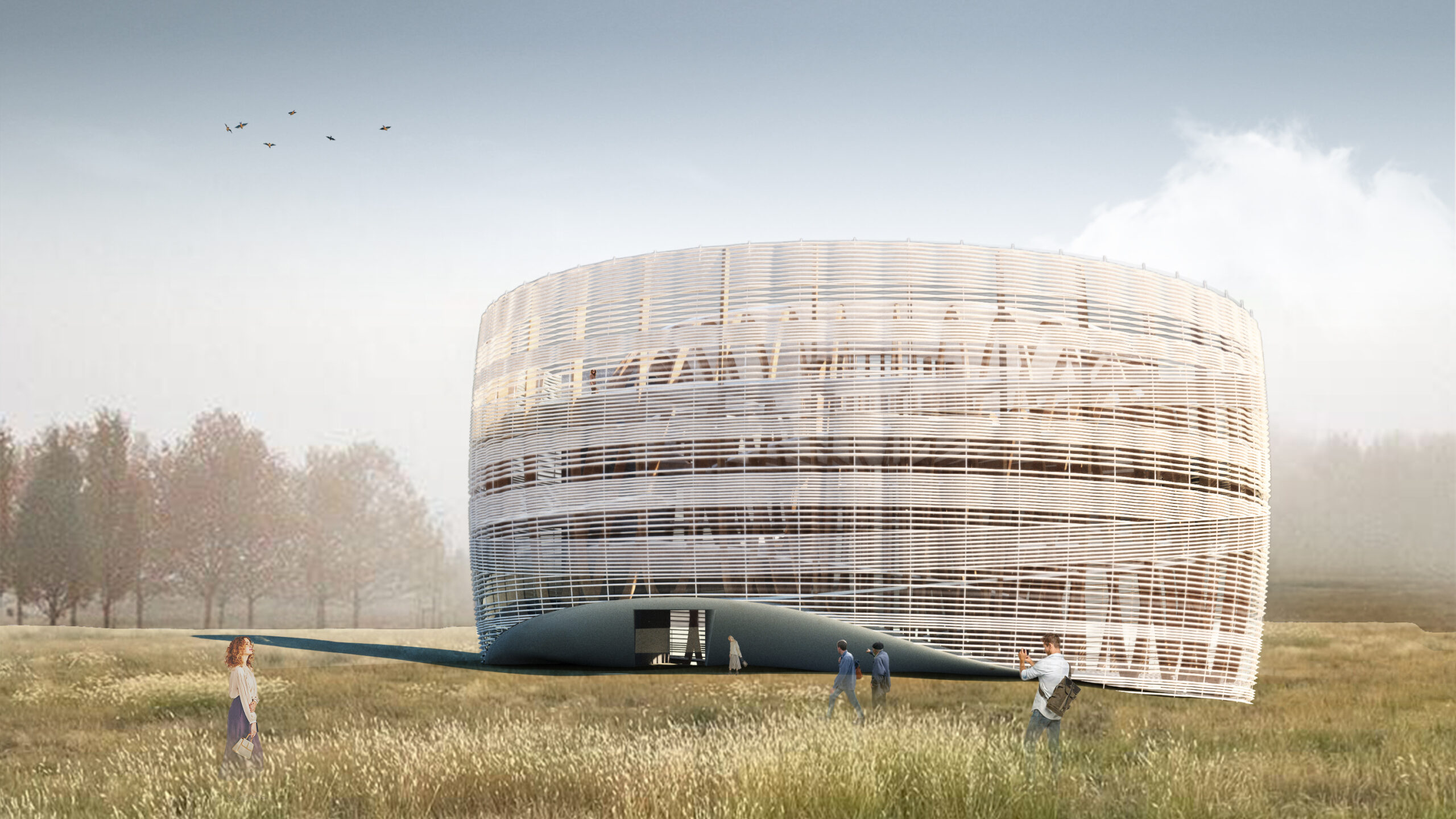

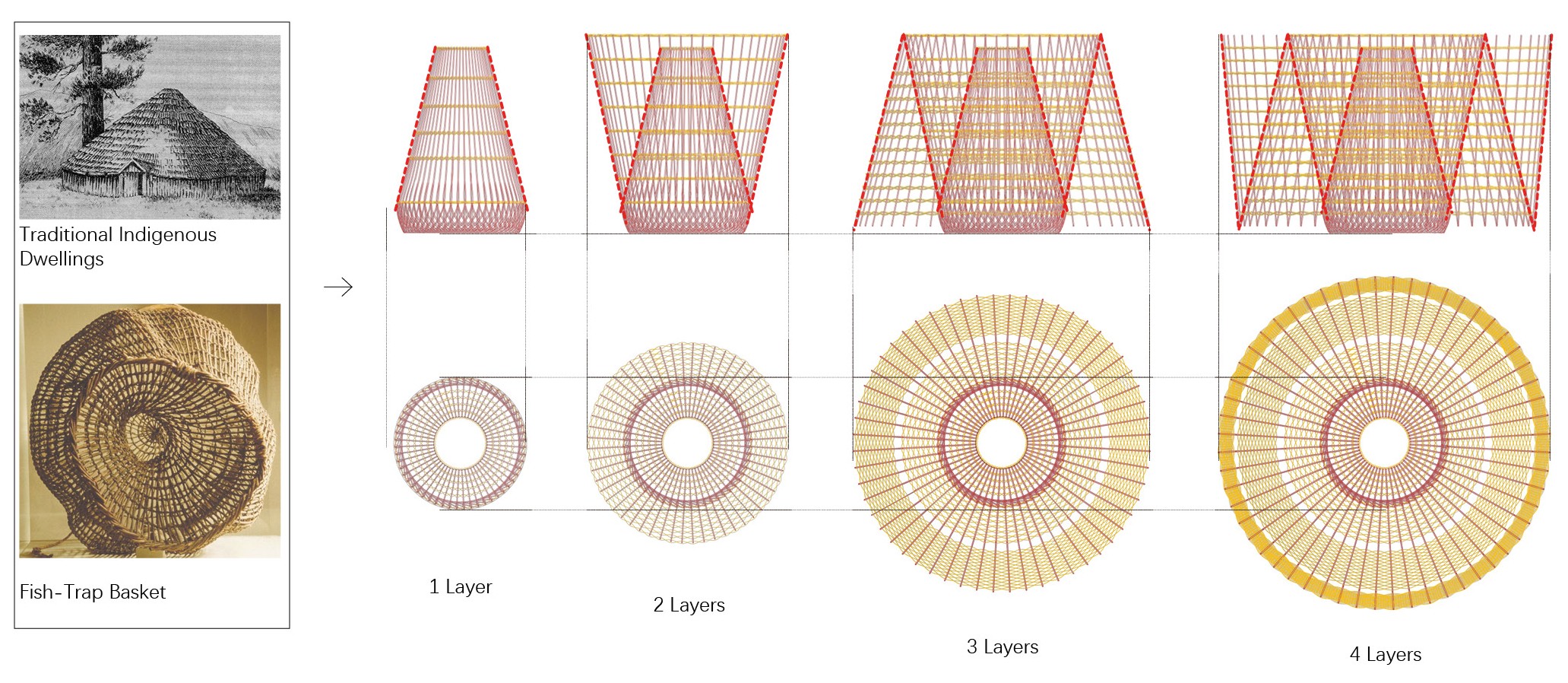
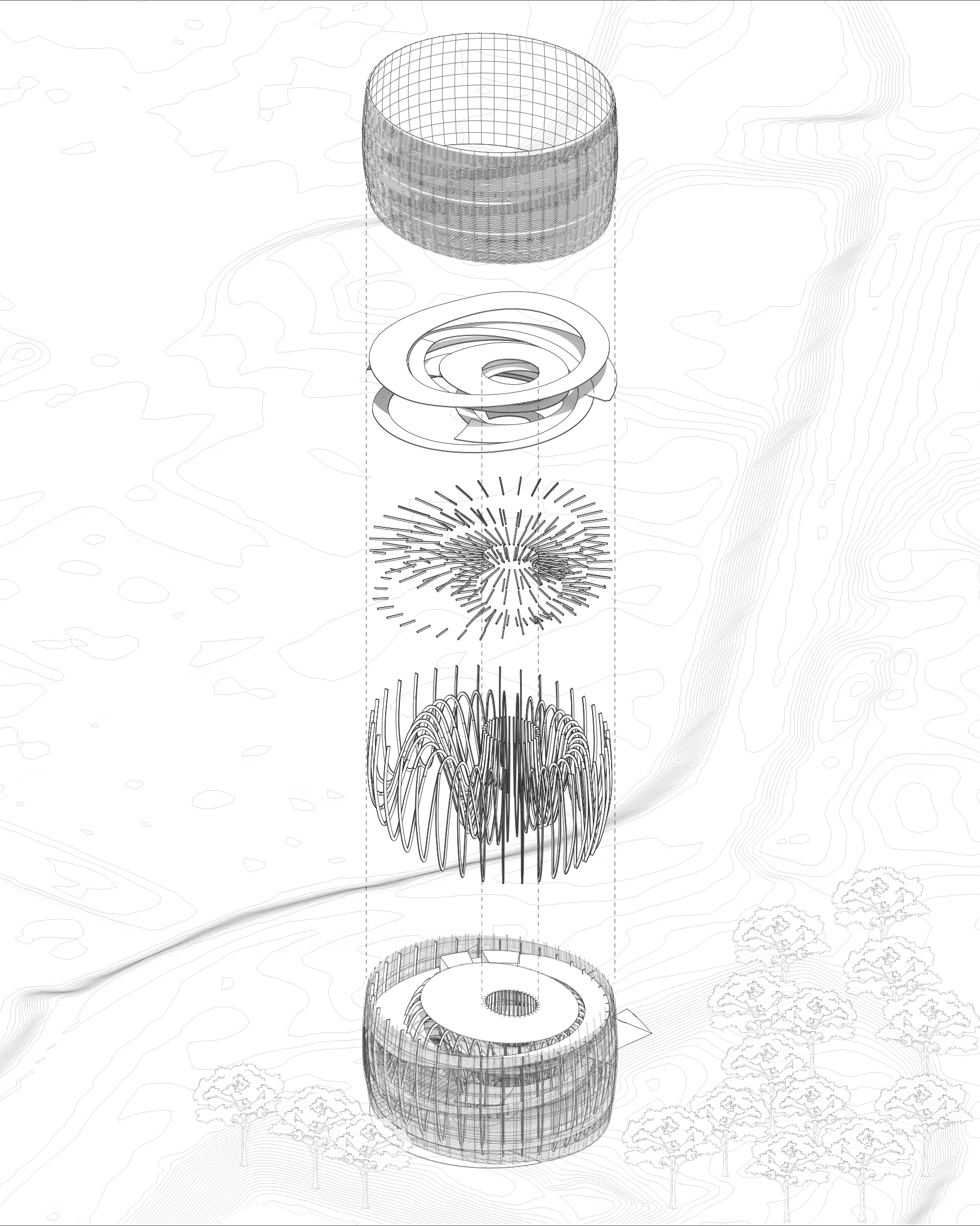
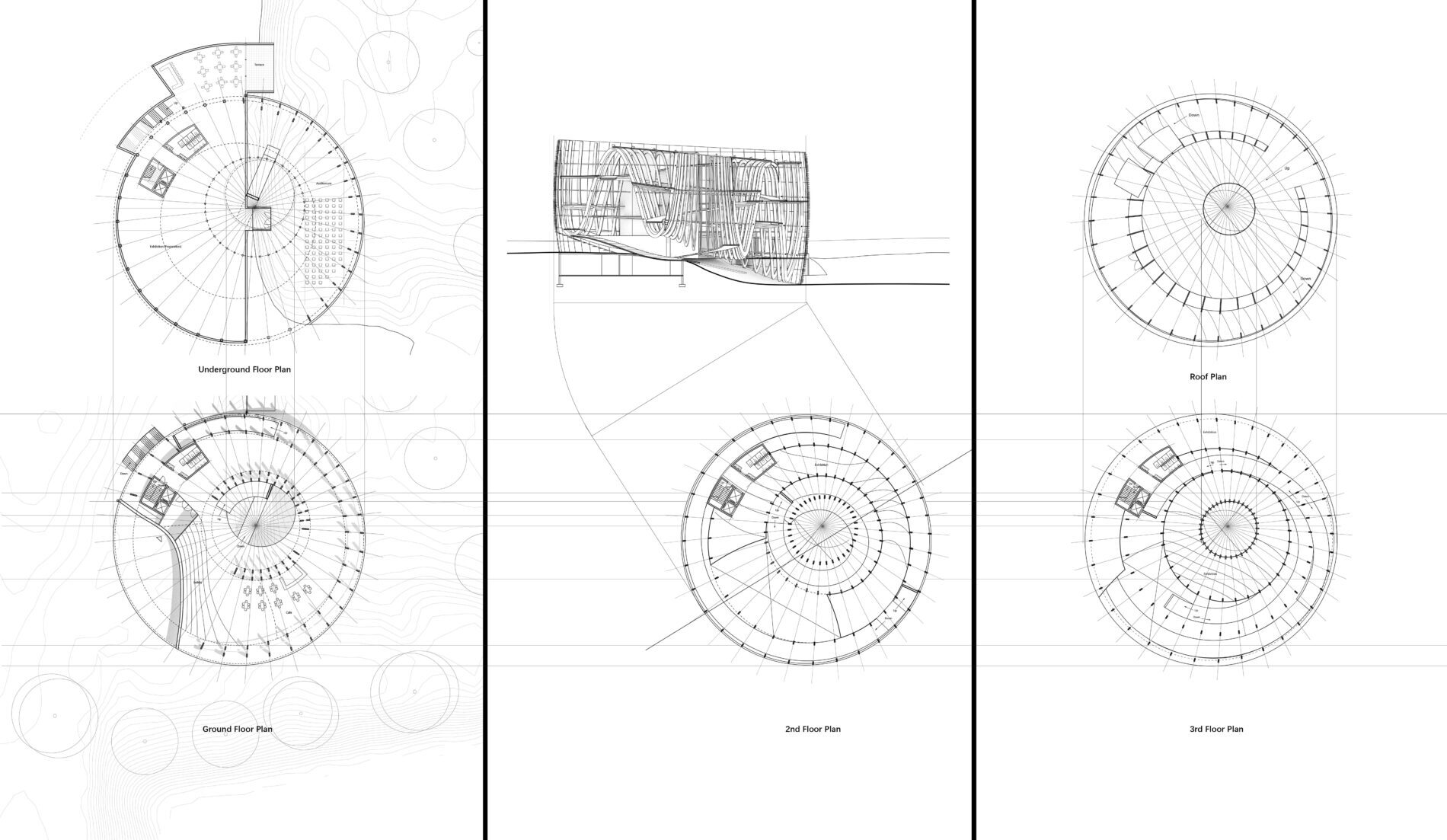
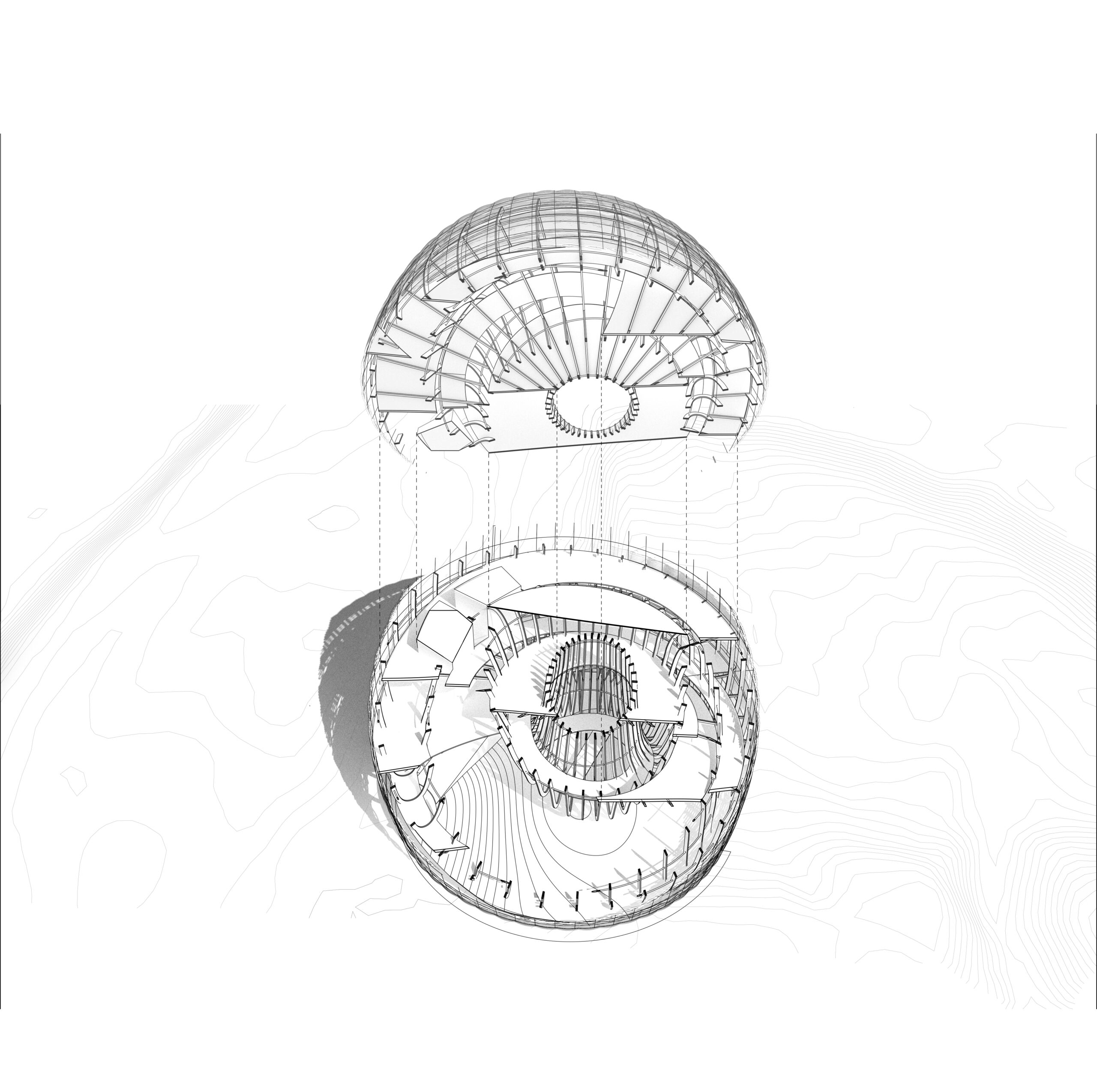
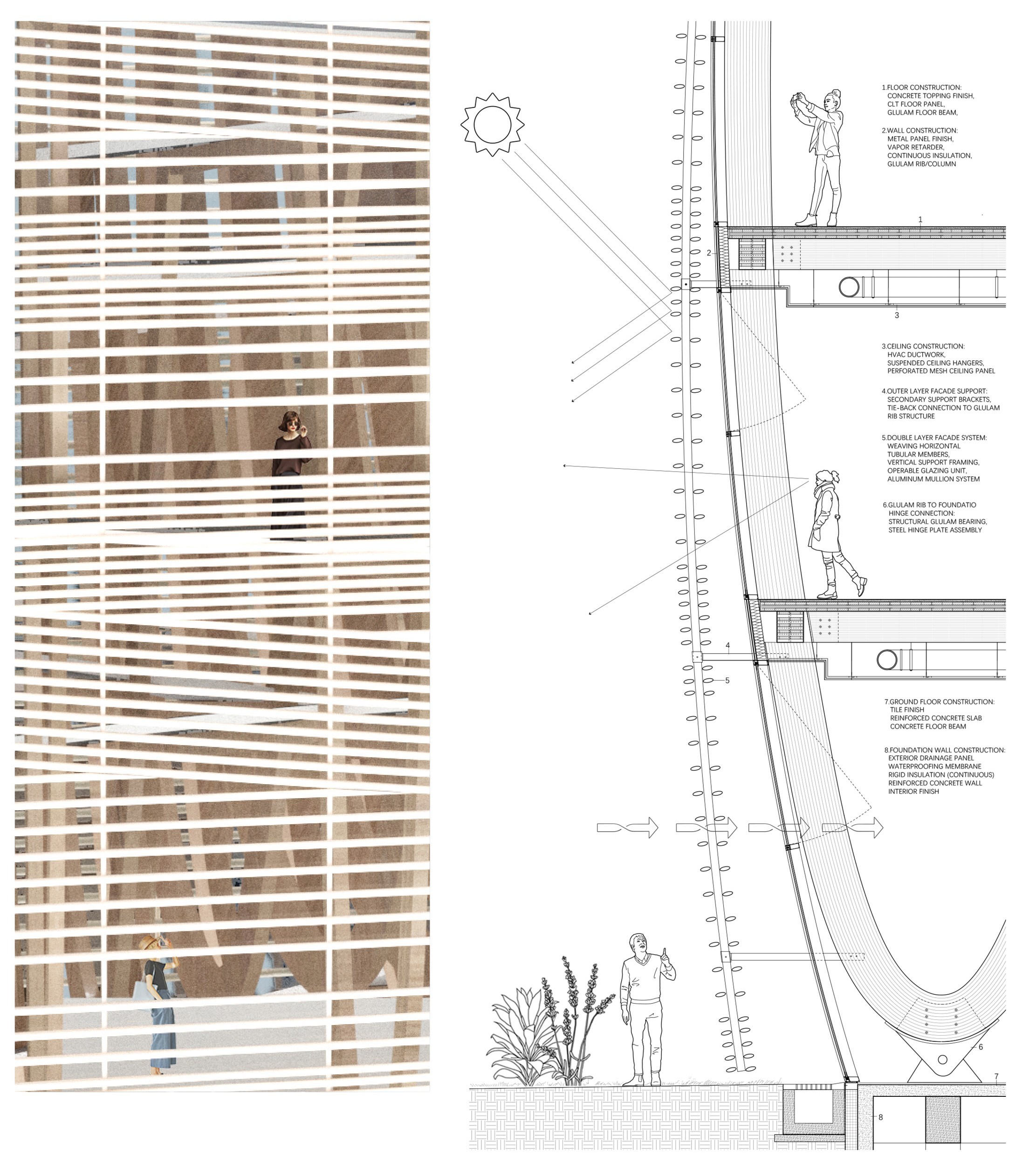
The double-layer façade translates Indigenous weaving into a high-performance, environmentally sustainable system. It’s shifting density filters harsh sunlight, softens glare, and reduces heat gain throughout the day. Paired with operable inner glazing panels, the façade supports natural ventilation and passive cooling. Despite its layered construction, the porous weave preserves clear views outward, framing the surrounding landscape and maintaining a strong connection to the site
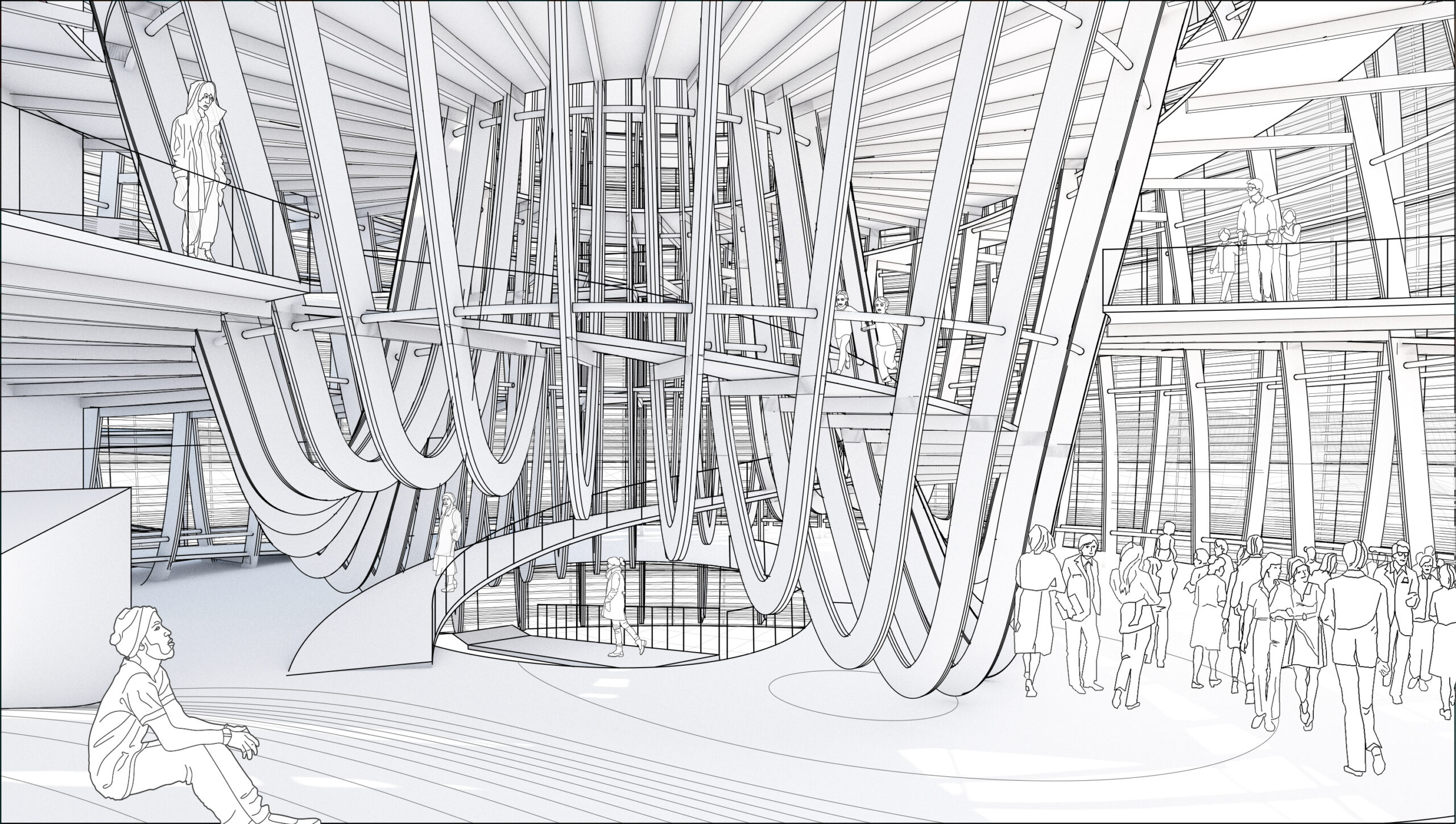
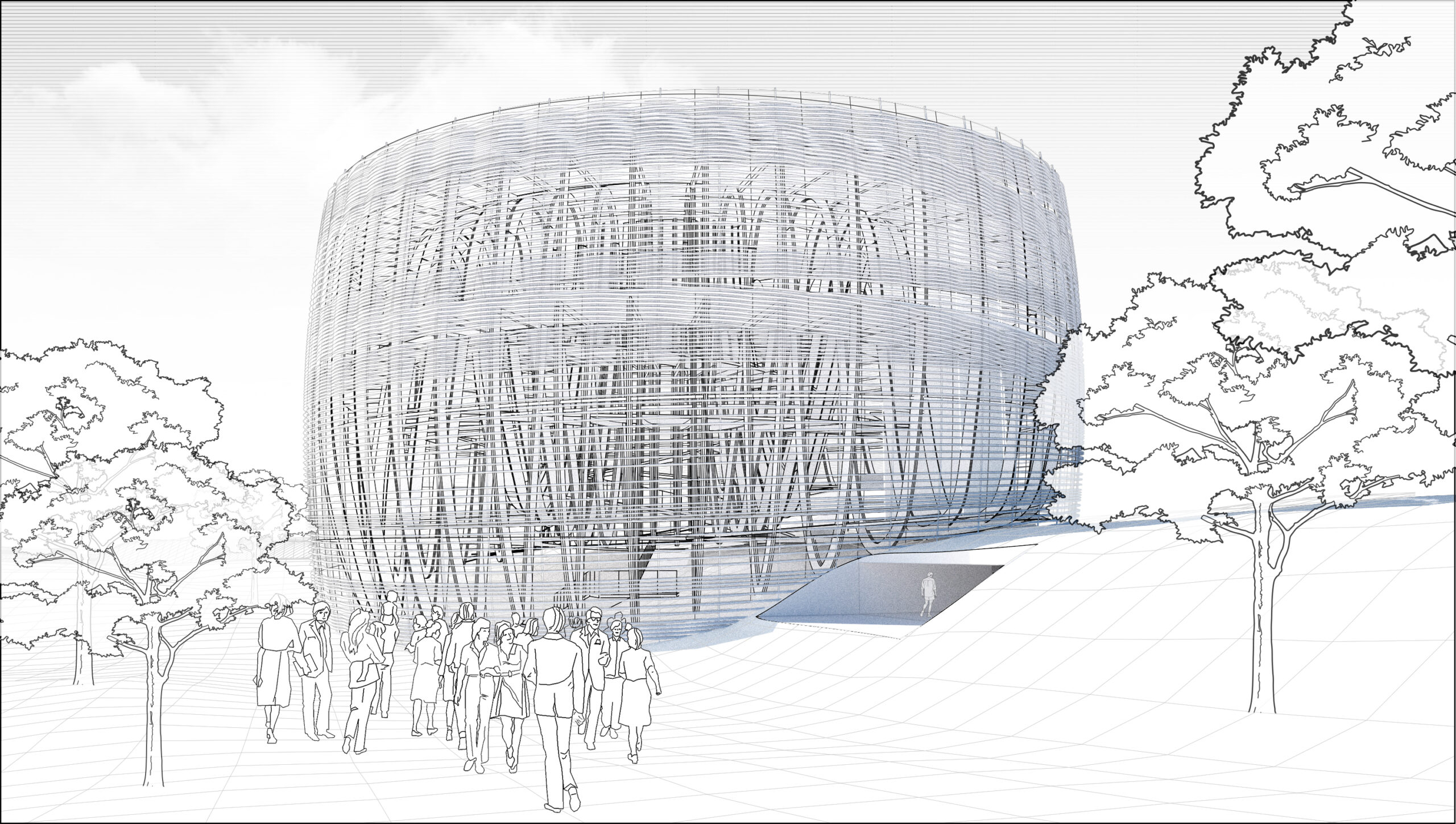
The California Indigenous Heritage Center is envisioned as a space of remembrance and celebration, honoring the diverse traditions of all California Indian cultures. Remaining nameless, faceless, and neutral, the Center avoids privileging any single tribe while offering a collective place of identity and continuity.
The design draws inspiration from indigenous basket-weaving traditions, specifically the fish trap basket. This artifact embodies both functional ingenuity and symbolic meaning: a cone nested inside a cylinder, porous enough to allow water to flow yet structured to hold life within. In architectural translation, the cone emerges at the core of the building, its narrow opening oriented skyward, echoing the form of traditional indigenous dwellings. Sunlight filters dramatically through this aperture, marking the interior with a spiritual and cyclical rhythm.
From the cone’s center, the architecture expands outward in layered weaves, unfolding as spaces for gathering, reflection, and exhibition. A spiraling circulation path recalls both the motion of woven fibers and the precedent of the Guggenheim Museum, offering visitors a continuous journey. Beginning at the ground plane, the spiral ascends through multiple platforms designed to accommodate exhibitions of varying scales. At the apex, a rooftop garden provides an immersive connection to the surrounding landscape, where visitors overlook the confluence of the Sacramento and American Rivers—waters that inspired the fish-trap concept. From there, the spiral continues downward, guiding the visitor along a descending loop that completes the narrative journey.
The building sits gently upon the ground, allowing the natural contours of the site to shape an indoor auditorium at the ground level. Here, the terrain becomes an active part of the architecture, inviting communal gatherings, performances.
Like the woven basket, the façade remains porous, filtering natural light and maintaining transparency with the environment. The interplay of light, shadow, and openness allows the building to breathe with its riverside setting. By uniting indigenous craft, natural symbolism, and contemporary form, the Center offers not only a place of cultural continuity but also an architectural meditation on history, resilience, and the future.